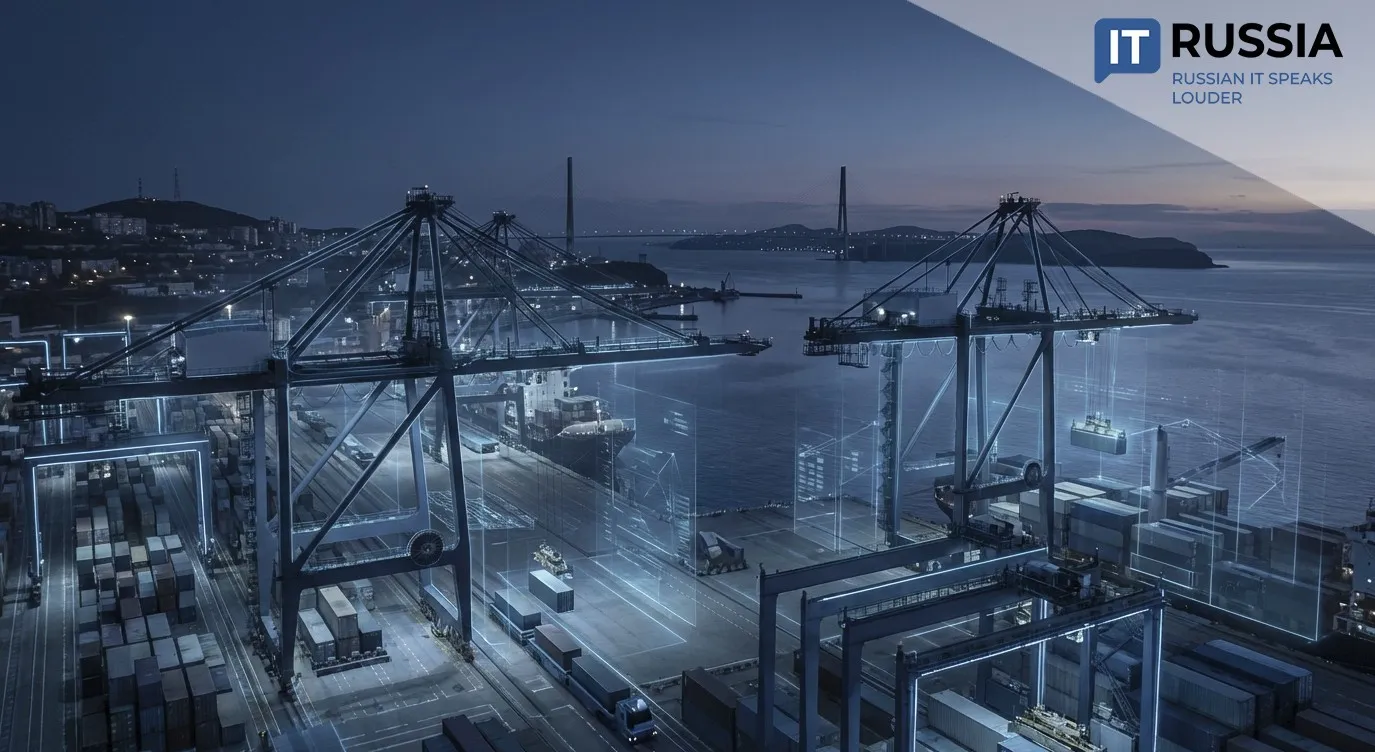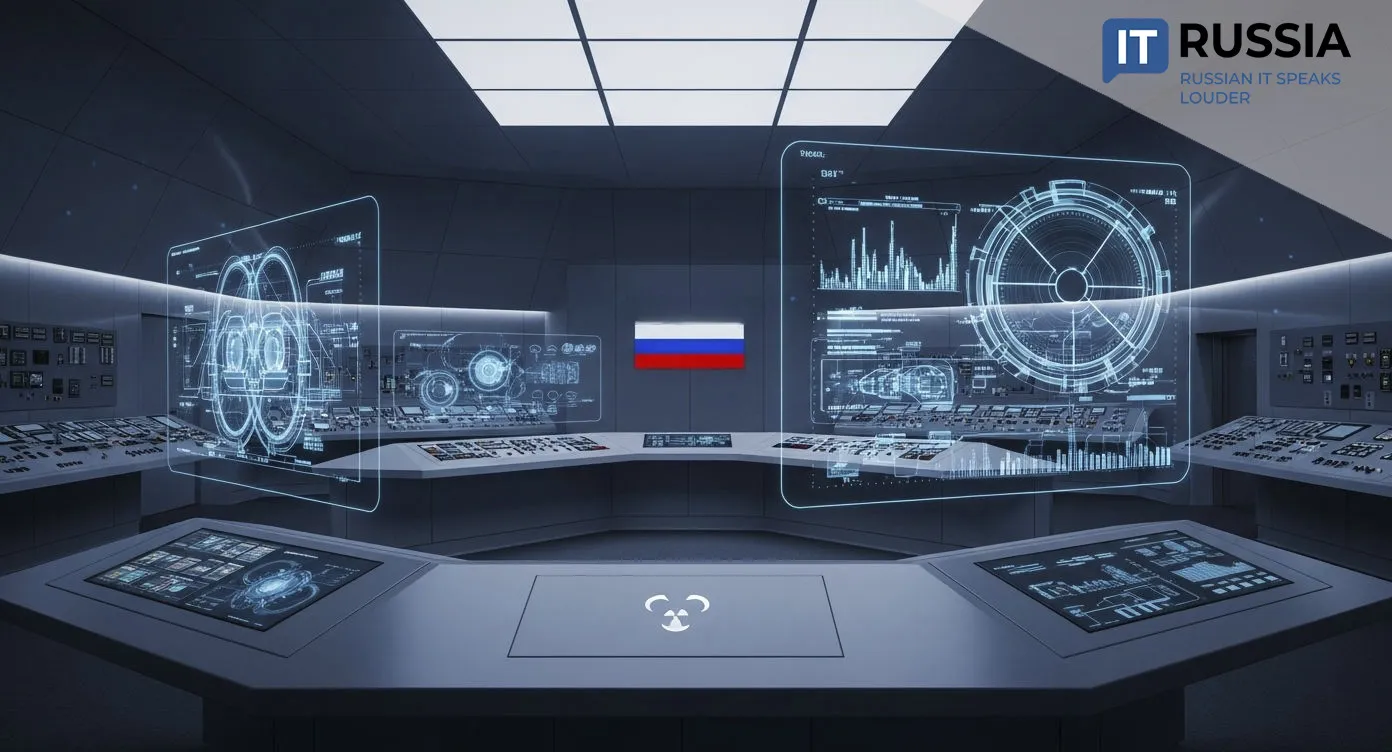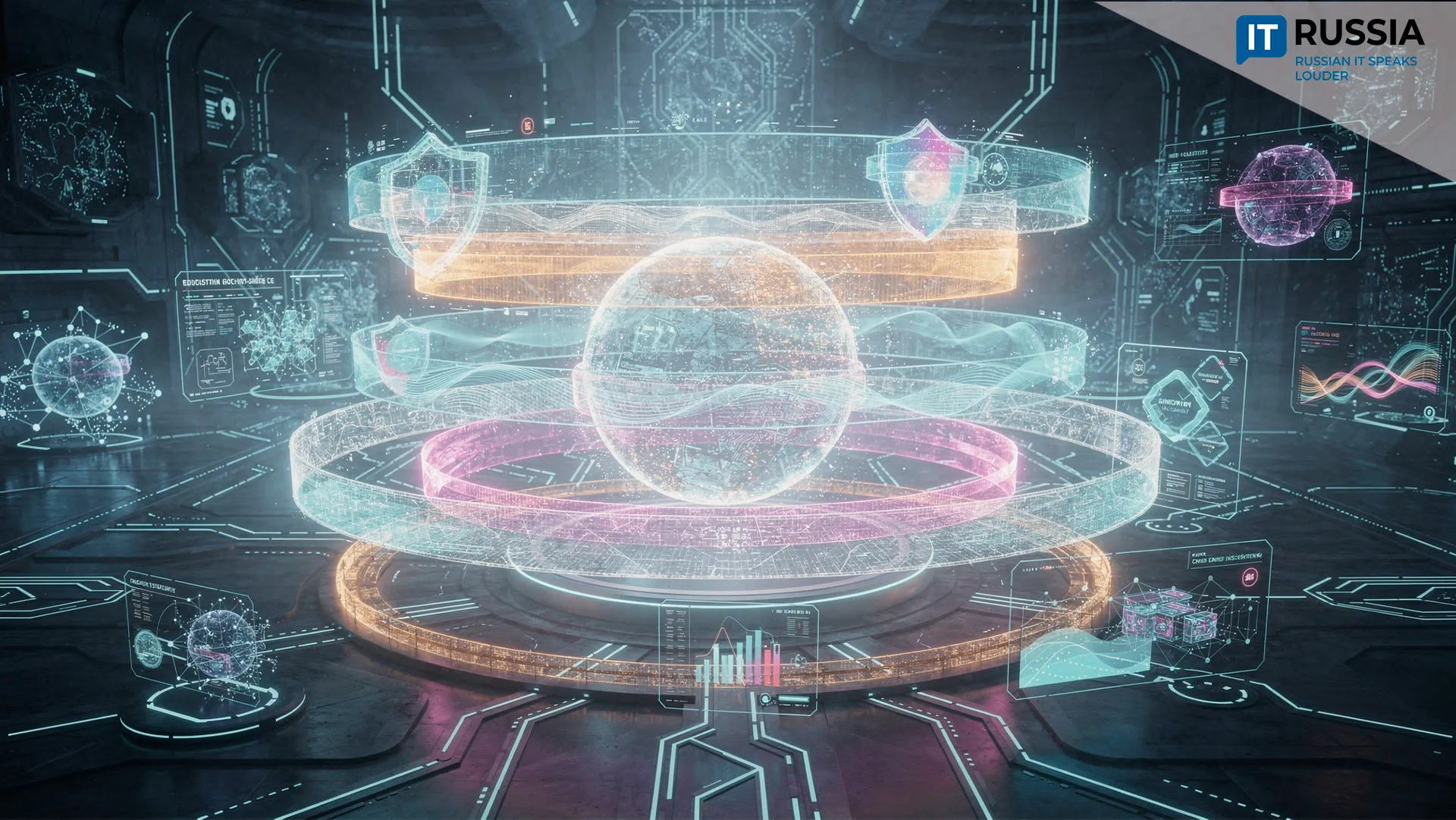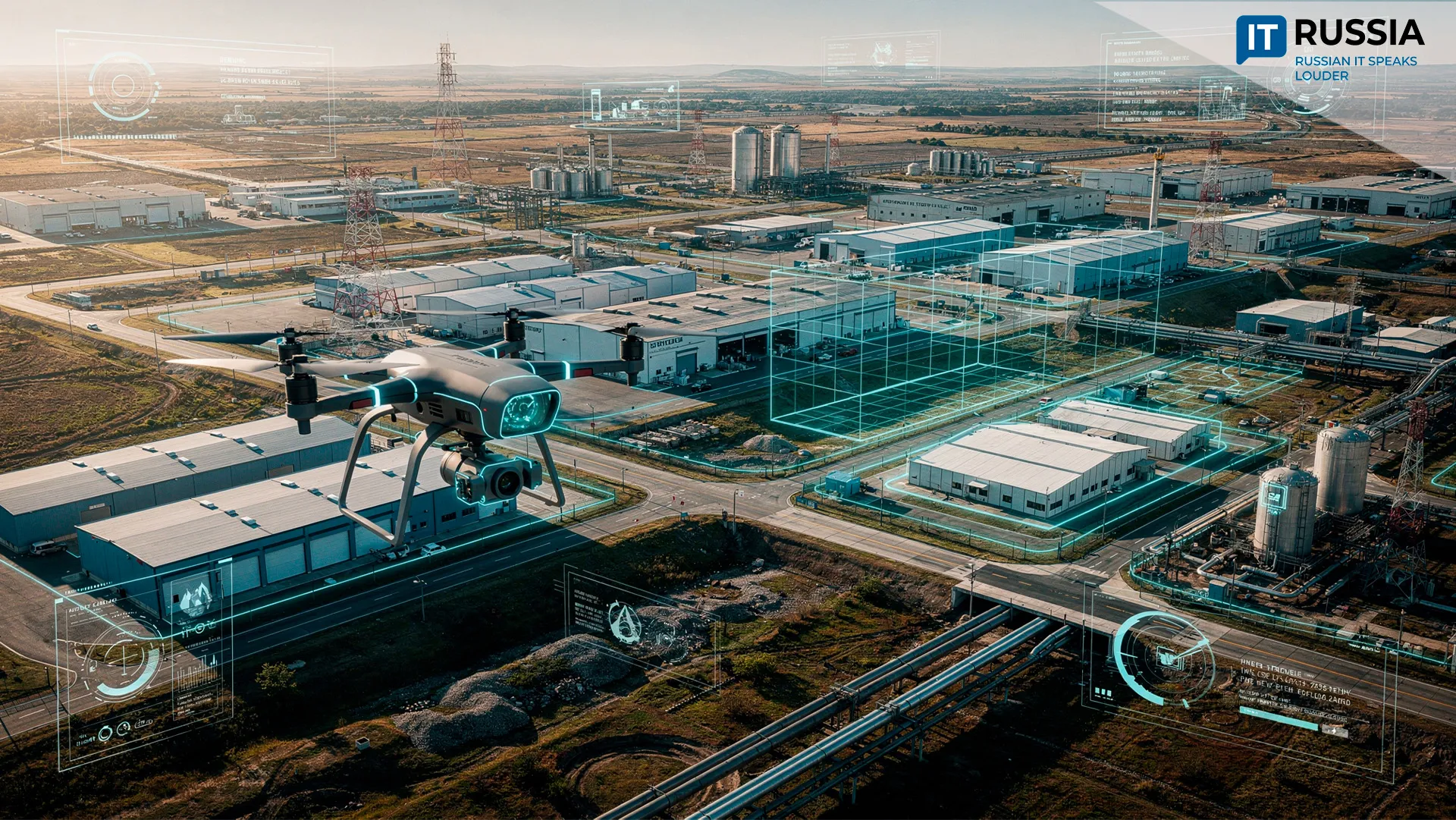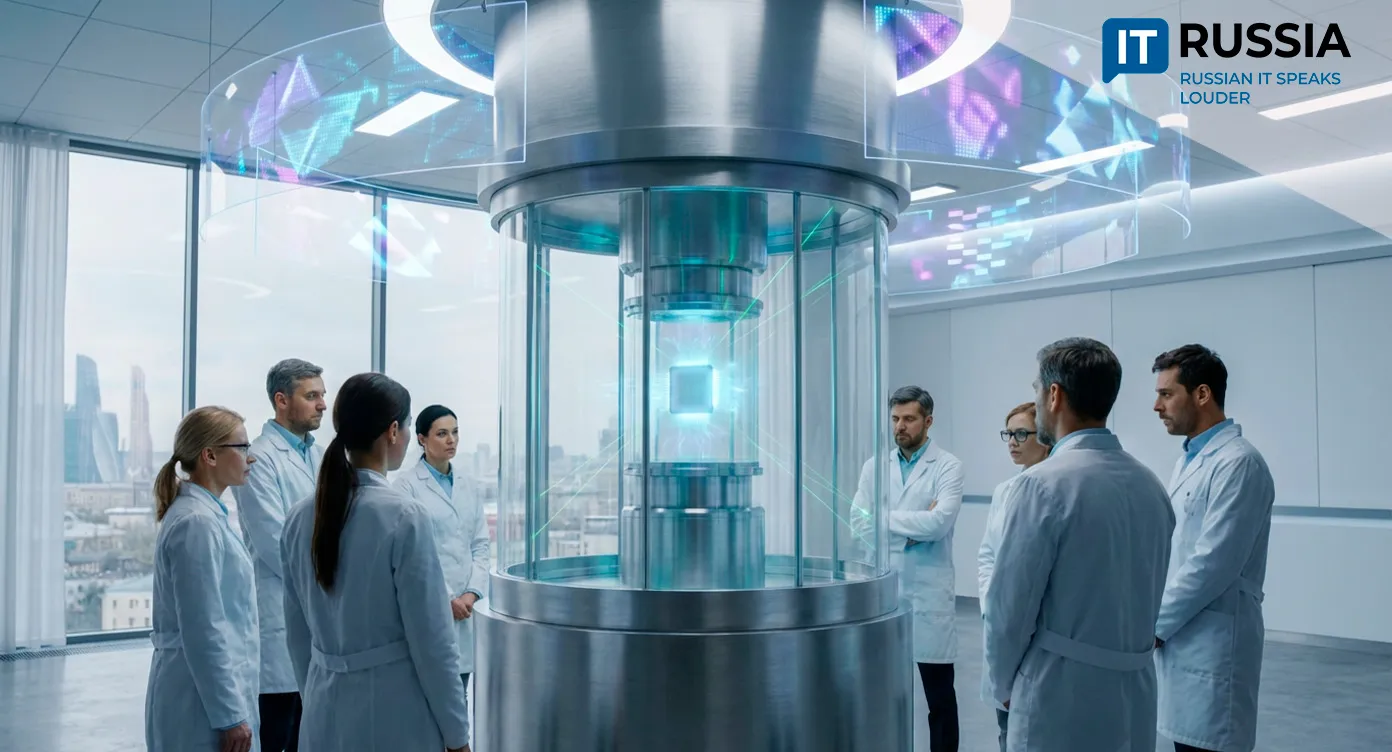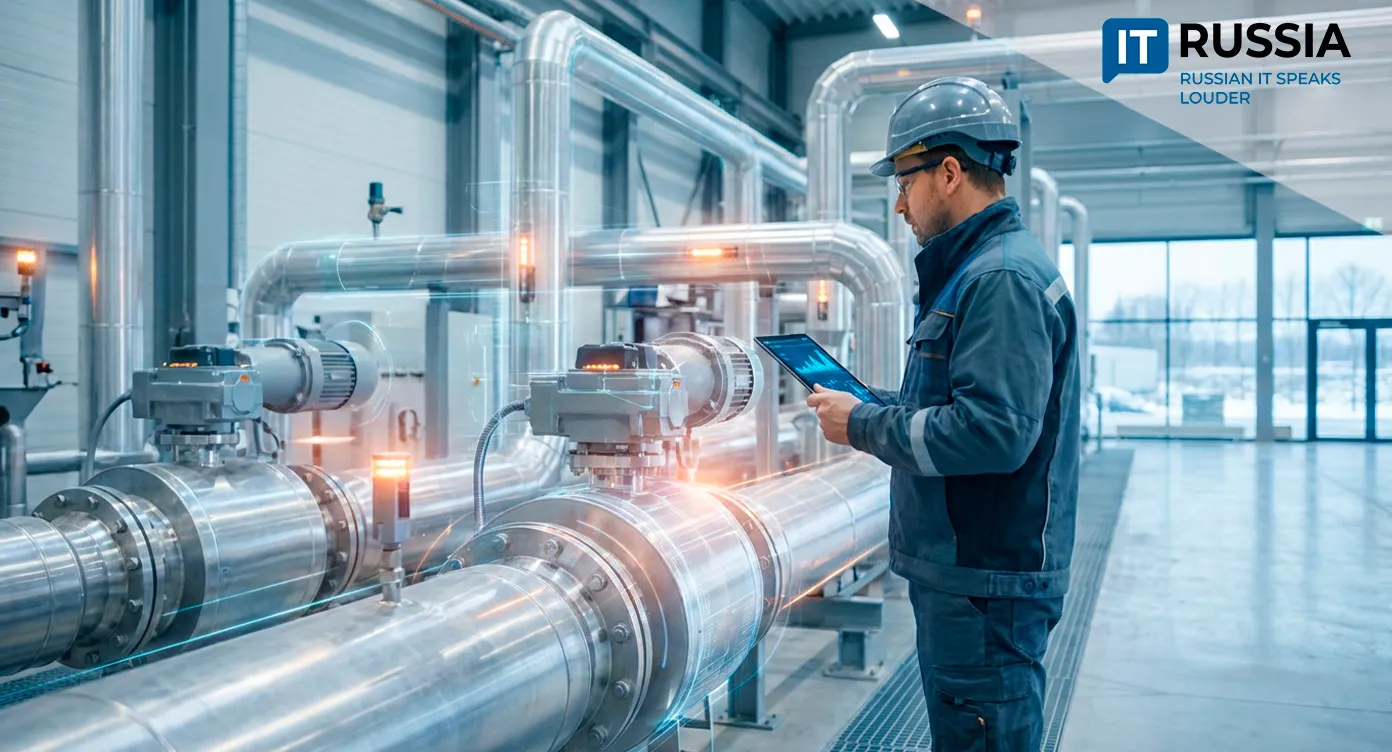In the Global Trend: Russia Expands Its Robotics Density
From import substitution to technological leadership: Russia is building a regional robotics ecosystem, marking a systemic shift in how the country approaches industrial automation and workforce challenges.
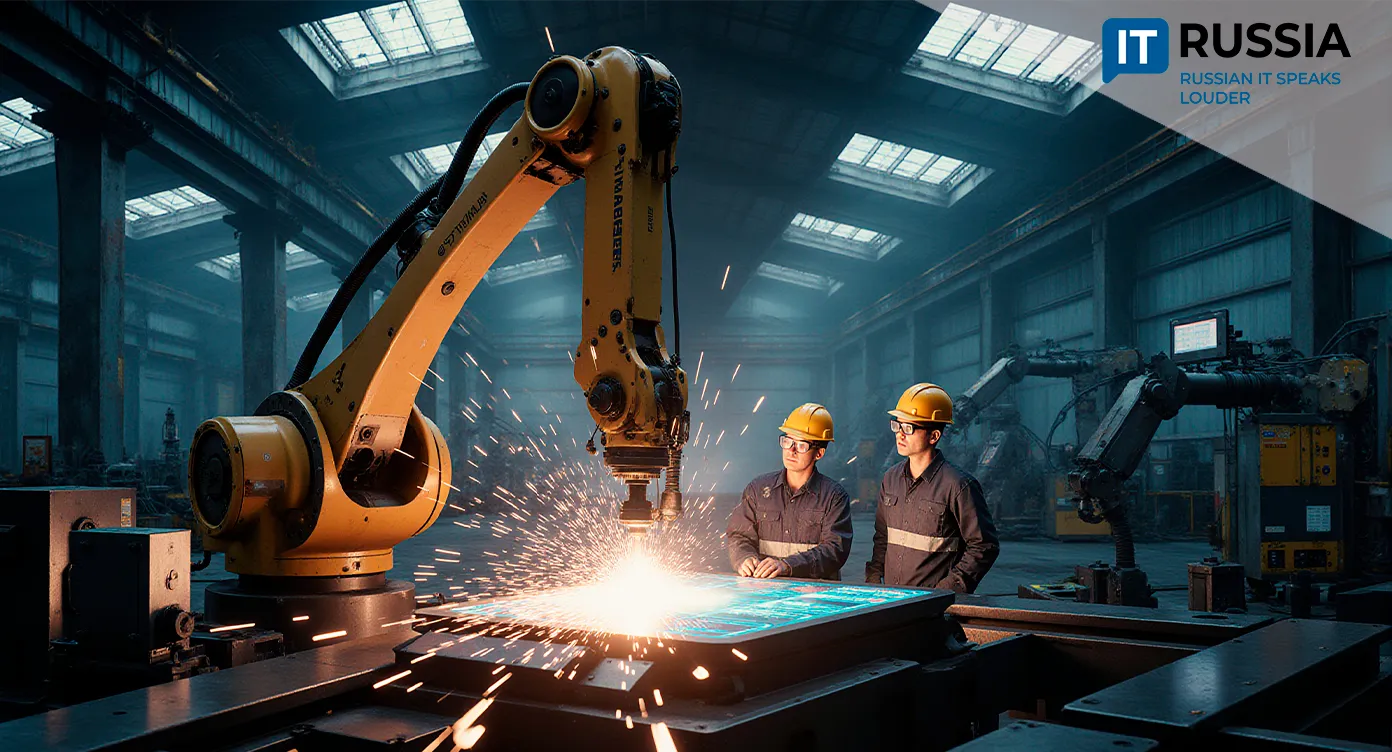
Future of Welding
At the Kurgan Industrial Park, Russia’s Plant of Integrated Technologies (KZKT) has launched an advanced robotic welding complex for automated assembly and welding of large-scale metal structures. The core of the system is a gantry installation with an industrial manipulator robot and two working zones — a universal welding platform for assembling frames of various configurations, and a set of synchronized rotary positioners providing access to weld seams at optimal angles.
The complex’s key advantage is the integration of machine vision and artificial intelligence, ensuring high precision, consistent quality, and a speed several times higher than manual welding. Its output is equivalent to the work of four to five skilled welders, a critical asset amid severe labor shortages.
The project required 120 million rubles (approx. $1.4 million) in investment, with 30 million rubles ($358,800) provided as a subsidy from the Kurgan Region’s Technology Development Agency. This highlights the effectiveness of regional policies supporting industrial digitalization.
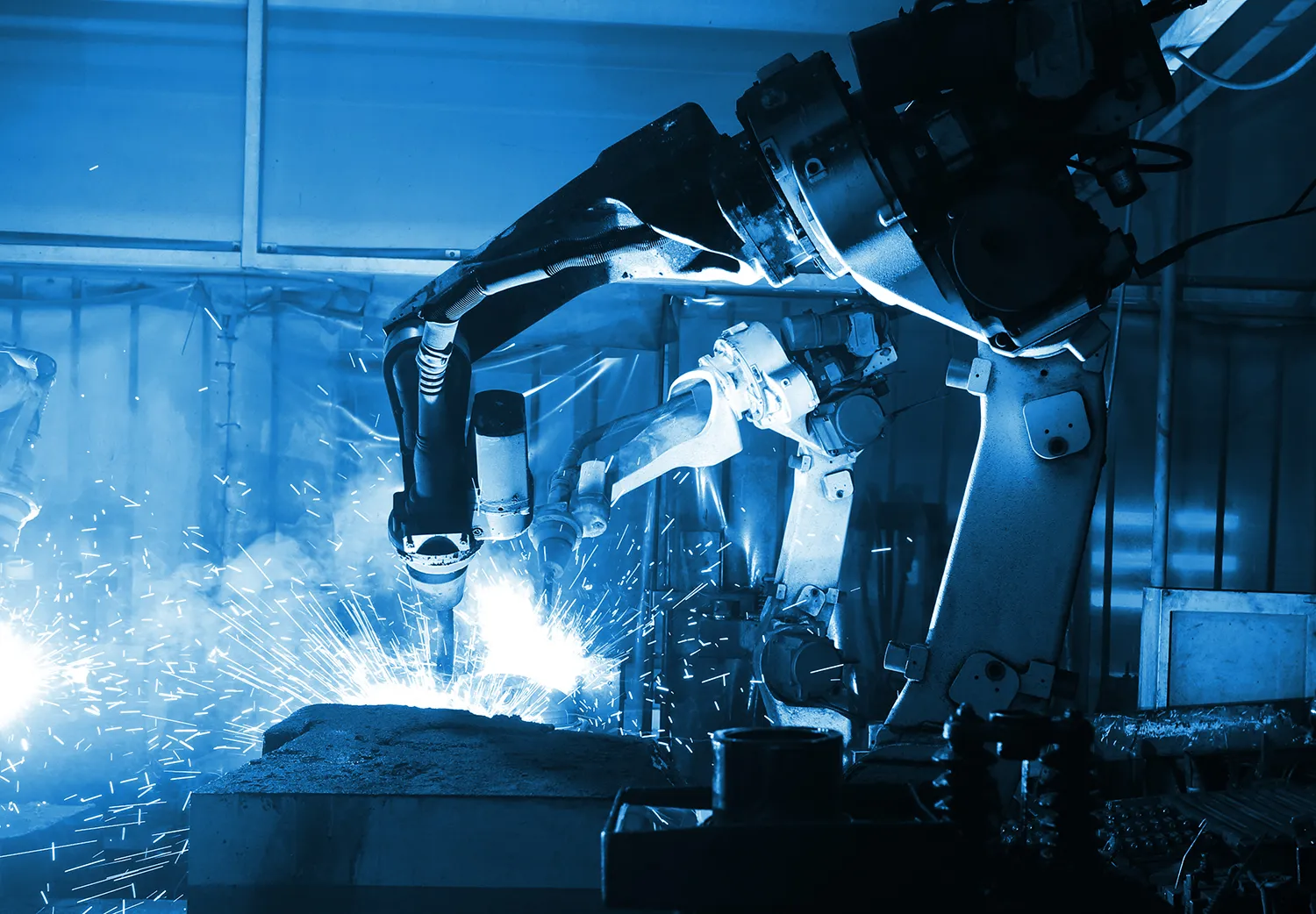
Russia Launches a New Era of Industrial Automation
The significance of the new complex is multifaceted. For the industry, it is a striking example of comprehensive robotization outside Moscow or St. Petersburg, proving that advanced technologies are accessible in Russia’s regions. For Kurgan Region, it reinforces its leadership in industrial growth: in the first seven months of 2025, the region’s industrial production index reached 121.6%. For workers, it promises stable employment in related professions such as operators, adjusters, and automation engineers, as well as higher product quality.
Globally, the project aligns with the accelerating trend toward industrial robotization. According to the International Federation of Robotics (IFR, 2024), the global industrial robot fleet has surpassed 4.28 million units, with 70% of new installations in Asia. Russia, eager to close its technological gap, is betting on regional initiatives like this.
Systemic Modernization Toward Technological Sovereignty
Russia’s robotics expansion is tied to both domestic demand and export potential. Under sanctions and labor shortages, robotization has become one of the fastest ways to expand capacity. The government is supporting these efforts through subsidies under the federal project “Production Equipment and Automation.” These include compensations to manufacturers for discounts on Russian-made equipment, making modernization affordable and accelerating localization.

The Ministry of Industry and Trade has also launched a large-scale robotics support program, with R&D centers eligible for grants of up to 1 billion rubles (approx. $11.9 million). Centers have opened in Innopolis (Tatarstan) and Perm, with eligibility extended to Belarusian robotics producers. Under the federal project “Development of Industrial Robotics and Production Automation,” Russia plans to allocate 350 billion rubles (approx. $4.1 billion) by 2030.
While the KZKT complex itself does not directly generate export revenue, accumulated experience and workforce training are laying the groundwork for exporting robotic welding software and services across the EAEU and other allied nations.
Turning Cutting-Edge Technology into Practice
The launch at KZKT continues a series of successful robotics deployments at Russian industrial sites.
In April 2025, AvtoVAZ, Russia’s largest carmaker, introduced 17 robotic welding lines with 112 industrial robots at its new Lada Iskra workshop. The 40,000-square-meter facility can produce up to 30 car bodies per hour and employs over 700 specialists. The plant now hosts more than 1,300 robots — a record for Russian automotive manufacturing. Automation on the Lada Granta line exceeds 85%, ensuring consistent quality and productivity across welding, painting, engine assembly, and final conveyor operations.
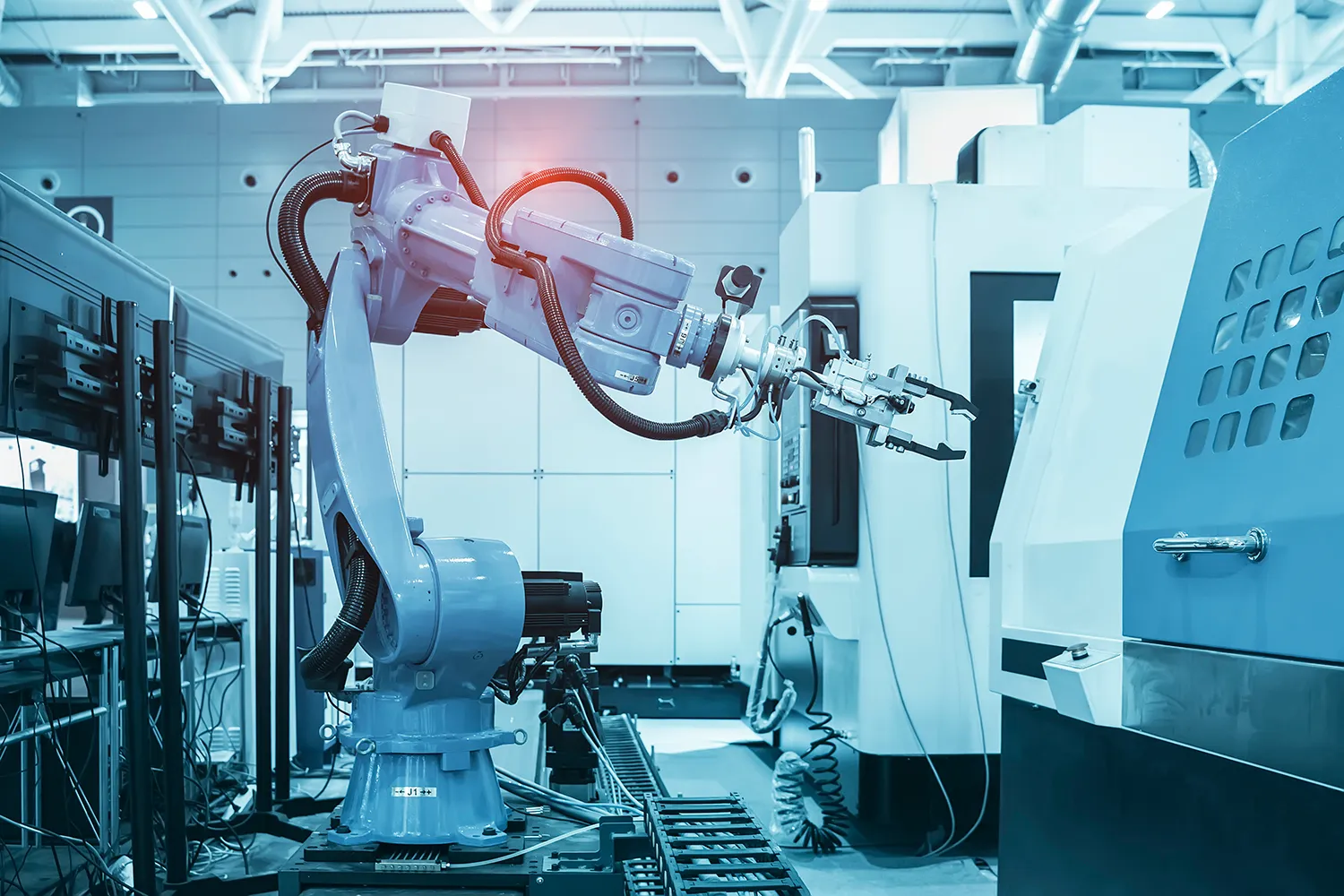
This year, the Chelyabinsk Robot Plant began mass production of the GR-40 gantry robot, notable for its unique technical features, reliability, and cost-efficiency — a breakthrough for Russian mechanical engineering.
Robotization as a Driver of National Goals
The KZKT welding complex is more than modernization: it marks a systemic shift in Russia’s regional industries toward a new technological era. With continued support, more domestic solutions, integrators, and standard “robotic welding cells” for small and medium-sized enterprises (SMEs) are expected.
Russia’s strategic objective is to enter the world’s top 25 countries in robotics density by 2030. With current support programs and rising regional interest, the country is poised to expand its integrator network, grow the share of domestic solutions — including software and gantry robots — and make robotic welding cells accessible for SMEs nationwide.















